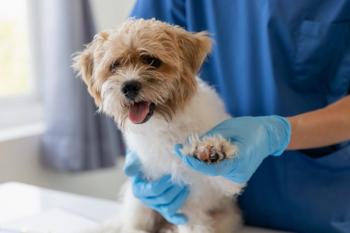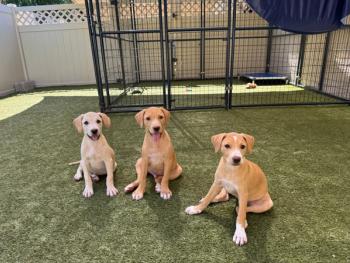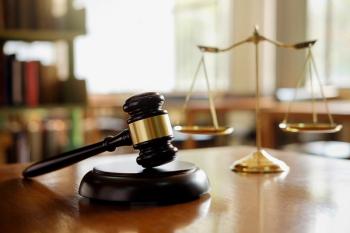
The Future of Veterinary Medicine: Drones in veterinary practice
What's that hovering at your shoulder? Oh yeah, the diagnostic test you ordered a few minutes ago.
(Getty Images)You may have seen a neighbor playing with a drone in the backyard or someone flying one around town. The toy remote-controlled helicopter of yesteryear is growing up and into a device that may revolutionize some components of veterinary practice.
What is a drone?
A drone may also be called an unmanned aerial vehicle (UAV) or remotely piloted aircraft (RPA), but the U.S. government has adopted the term unmanned aircraft system (UAS). Drones are traditionally powered by gas, jet fuel or rechargeable batteries, but the U.S. Navy is experimenting with
Future commercial uses for drones include virtual reality video tours of foreign countries, viewing vacation real estate, virtual attendance at outdoor sporting events and, most important for you, several veterinary applications.
Where we are now
Today, the closest thing to functioning veterinary drones are those used by the local government in Houston, Texas,
There are good reasons the FAA is cautious. A drone equipped with Wi-Fi could seek out unsecured wireless systems for financial and identify theft. These regulations prevent drones from snooping and tangling with power lines, helicopters and airplanes; plus, consider the
In the United States a new service called
The FAA must also consider wildlife. In one case a
A future for any type of veterinary practice
Food animal. The low-hanging fruit for veterinary drone use is food animal practice, especially where grazing herds are involved. In addition to remote monitoring of herd health, drones can hover with high-definition video, so it is possible to
Drones with thermal imaging can locate lost or stray animals, and if an animal is wearing a battery collar with an active transmitter, the drone could even capture the RFID chip data to go with GPS coordinates. Drone thermal imaging could also identify animals running a fever and those coming into estrus.2 Video imaging could recognize other clinical signs in animals. Worried about cold weather? When it's below zero outside, a drone can be operated inside a warm truck.
Deon van der Merwe, PhD, BVSc, an associate professor at Kansas State University who has an avid interest in the use of UASs for veterinary applications, says, “Suppose there was a major hoof and mouth disease outbreak. Because grazing cattle often dismiss drones as birds, a specially equipped drone could remotely identify sick animals or deliver a vaccine to healthy cattle or even wildlife.” A drone equipped with an audible horn could move individuals or even a herd from one area to another. Watch out herding dogs, these things can operate from miles away!
Mobile mixed practice. Now that GPS and cell phones make it possible to find the farm, a persisting problem is what to bring on the truck. As veterinary medicine continues to evolve, it will become a competitive disadvantage to make do with what instruments or medicine you have in the field. Today, you'd ask the client to bring the animal into the clinic or reschedule when you can return with the drug or instrument needed. Tomorrow you'll send a text to your office with your GPS and what you need, and an assistant will load the instrument or drug into the drone and send it to you while you wait. Lab samples could then be loaded into the same drone, which would be programmed and sent back to your office or directly to your preferred lab.3
Equine practice. Equine mobile practitioners would reap all the benefits already mentioned, plus the ability to perform preliminary examination of horses in the far pasture before trekking all the way up there. A sedative, a vaccine, antibiotic or anthelmintic could be delivered to a wild horse. Lameness examinations could be enhanced with a 3D slow-motion video-recording drone trailing behind as the horse moved out in each gait over an extended distance. This will use the drone equivalent of automobile adaptive cruise control, which allows the user to identify a moving object and stay a fixed distance behind.
Forensic veterinarians. Drone use would be valuable in evaluating an animal-related crime scene before it is contaminated. A forensic veterinarian can get a high-definition video recording up close, from high above and from every angle. For this use, the drone can be equipped with audio recording and a wide angle video lens and may even be able to collect crime scene samples. A laser attachment can give very accurate measurements. The data can then be retained as evidence for any subsequent trial.
Veterinary regulatory agencies. Some veterinary regulatory agencies may begin to use drones for monitoring wildlife during oil spills, quarantine, biohazard carcass disposal or licensing evaluation of remote locations. One government veterinarian could travel to a given locale and then send out multiple preprogrammed drones and collect them at the end of the day for data analysis. Eventually, drones will be allowed indoors, where they will silently hover a few inches from the ceiling, collecting video, audio, radiographs, radioactivity and even gas samples to measure anesthetic residue.
Small animal practice. Once every veterinary clinic is set up for drone submission of laboratory samples, there will be little need for the labor cost and carbon footprint of a driver going to each veterinary hospital to pick up samples or deliver laboratory supplies. There will also be no need for the future veterinary practice to own some expensive veterinary instruments since you can have them delivered then returned by drone on a moment's notice. Google is working on a
Veterinary drones might become the preferred way to receive or deliver compounded, poisonous or radioactive medications. A pharmaceutical representative may want to send samples out by drone since it will be less expensive than any other method of delivery, as evidenced by Amazon's interest.
How far in the future?
So how soon will we be seeing veterinary drones? At the current rate the FAA is approving commercial use it might be decades. However, hobby drones are here now and will continue to proliferate. For that reason, instead of training your dog to get your slippers you might have your drone do it.
References
1. Busting myths about the FAA and unmanned aircraft. Federal Aviation Administration, 2016. Available at:
2. Piccione G, Caola G, Refinnetti R. Daily and estrous rhythmicity of body temperature in domestic cattle. BMA Physiology 2003;3:7. Available at:
3. Amukele TK, Sokoll LJ, Pepper D, et al. Can unmanned aerial systems (drones) be used for the routine treatment of chemistry, hematology, and coagulation laboratory specimens? PLoS One 2015;10(7):e0134020.
Dr. Tripp is the founder of
Newsletter
From exam room tips to practice management insights, get trusted veterinary news delivered straight to your inbox—subscribe to dvm360.






